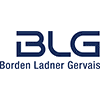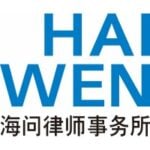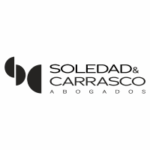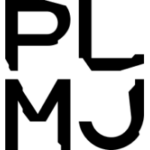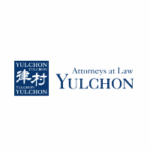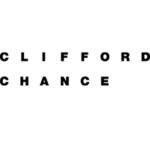-
What types of conduct and causes of action can be relied upon as the basis of a competition damages claim?
The typical causes of action which can be relied upon to bring a competition damages claim are those provided for by
- Article 101 of the Treaty on the Functioning of the European Union (“TFEU”) and Article 2 of Law No. 287 of 10 October 1990 (“the Italian Competition Act”), which prohibit agreements and concerted practices having as their object or effect the prevention, restriction or distortion of competition, and
- Article 102 TFEU and Article 3 of the Italian Competition Act, which prohibit the abuse of a dominant position.
An additional cause of action in matters where there is an imbalance in the contractual or economic strength of the parties is the so called abuse of economic dependence, provided for by Article 9 of Law No. 192 of 18 June 1998. This provision prohibits the abuse of a client’s or supplier’s state of economic dependence and provides an exemplary list of typical abuses, such as the refusal to sell or the refusal to buy, the imposition of unjustifiably burdensome or discriminatory contractual conditions, or the arbitrary interruption of established commercial relations.
The notion of economic dependence focuses on the relative balance of economic power between two undertakings within a specific relationship (e.g. in light of sunk investments or other lock-in effects). This implies that the legal threshold for a finding of economic dependence is lower than that required for a finding of dominance under Articles 102 TFEU and 3 of the Italian Competition Act, as it does not require market definition and dominance analysis. Moreover, the notion has been interpreted broadly in the case law and has been applied to situations where the parties had no prior contractual relationships, e.g. to provide access to resources owned by the relatively dominant undertaking.
Interestingly, according to recent amendments to Article 9 of Law No. 192 of 18 June 1998, economic dependence is presumed, in the absence of evidence to the contrary, in relation to digital platforms that play “a key role in reaching end users or suppliers, also thanks to network effects or availability of data”. For the first application of this provision, see decision No. 30570 of 4 April 2023 which opened formal proceedings in case A559-META/SIAE, where the Italian Competition Authority applied the presumption in question to Meta and then relied on the rules on economic dependence in assessing its conduct during the negotiations with SIAE, the Italian collecting society. The decision was later annulled by the Council of State for procedural reasons.
-
What is required (e.g. in terms of procedural formalities and standard of pleading) in order to commence a competition damages claim?
The procedural formalities required to commence a competition damages claim are relatively simple and are the ordinary ones provided for in the Italian Code of Civil Procedure. More specifically, the requirements of a writ of summons are listed under Article 163 of the Code and include the indication of the factual and legal grounds of the claim, the indication of the sought remedies and the indication of the evidence which the claimant intends to rely upon.
Although claimants may supplement their allegations and evidence at a later stage, their writ of summons shall contain the bulk of their factual allegations and legal arguments, in order to allow defendants to comprehend and defend themselves against the claim. This implies that writs of summons tend to be fairly detailed and structured documents in competition damages cases.
As a general principle (Article 2697 of the Italian Civil Code), claimants bear the burden of allegation and proof in relation to the facts constituting the grounds for the claim. Conversely, defendants bear the burden of alleging and proving the facts on which their objections are based (see Question 8 for further details on the applicable standard of proof in Italy).
In competition damages cases, however, this traditional allocation of the burden of proof only remains applicable to stand-alone actions, i.e., actions concerning conducts which have not yet been the subject matter of final decisions of competition authorities.
For follow-on actions, Article 7 of Legislative Decree No. 3 of 19 January 2017 (“Decree No. 3/2017”), which implements Directive 2014/104/EU (“the Damages Directive”), states that once a decision of the Italian Competition Authority establishing a violation of competition law has become final, the findings of the decision on the existence, nature, duration and scope of the violation are binding and cannot be challenged in subsequent follow-on actions. The claimant is only required to provide evidence of the alleged damages and of the causal link between such damages and the violation as established by the Italian Competition Authority’s decision.
Similarly binding are the decisions of the European Commission. Article 16 of Council Regulation (EU) No. 1/2003 provides that national courts, when ruling on agreements, decisions or practices under Articles 101 or 102 TFEU which have already been the subject of a Commission’s decision, cannot take decisions that are inconsistent with the decision adopted by the Commission.
These principles significantly ease the burden of allegation and proof on claimants in follow-on actions, as claimants can extensively refer to the findings of the Competition Authority in their writs of summons.
Partially analogous principles apply to settlement decisions. Even if they are not binding, settlement decisions are acknowledged by settled case law of the European and national courts of the Member States to be a significant indication of anticompetitive conduct, primarily due to the acknowledgment of liability by the undertaking entering into such a procedure.
As can be seen in the answer to Question No. 15, the timeframe currently provided for by the Italian Code of Civil Procedure for supplementing the evidence attached to the writ of summons is relatively compressed. It is thus good practice for claimants to prepare the economic evidence on damages they intend to rely upon in advance of the case.
-
What remedies are available to claimants in competition damages claims?
The first remedy available to claimants in competition damages proceedings is the compensation of the damages incurred (see Question No. 4 for further details on the point).
Additionally, claimants may seek declarations of invalidity of agreements or parts thereof, as well as cease-and-desist orders of the ongoing infringements or orders to undertake certain conducts. Importantly, such orders can be assisted by penalties in case of breaches of the order. Under Article 614-bis Code of Civil Procedure, the amount of the penalty shall be proportionate to the importance of the matter, to make sure that compliance with the order is the economically rational conduct for the undertaking concerned.
Interim measures, including cease-and-desist orders or other measures deemed appropriate to prevent irreparable harm, may be requested before a decision on the merits, when the applicant establishes a prima facie case (“fumus boni iuris”) and the risk of irreparable harm (“periculum in mora”) in the timeframe required to obtain a decision on the merits.
Italian law also provides for additional measures, such as the publication of the decision under Article 120 of the Italian Code of Civil Procedure, as a remedy for the non-economic loss suffered by the claimant.
-
What is the measure of damages? To what extent is joint and several liability recognised in competition damages claims? Are there any exceptions (e.g. for leniency applicants)?
Italian law provides that claimants are entitled to obtain full compensation for all damages suffered. Under Article 1 of Decree No. 3/2017, such compensation “includes actual losses, lost profits and interests”.
The calculation of actual losses and lost profits can be a complex exercise in competition damages cases, as courts are required to identify what the competitive conditions would have been in the absence of the infringement and what costs and revenues the injured party would have incurred or obtained in such a counterfactual scenario. Courts typically rely on independent experts to assist with this quantification (see Question No. 14 below for further details).
Depreciation, from the occurrence of the harm until actual payment of the liquidated damages, is also taken into account and can be calculated using a number of different methods. For instance, the Court of Milan recently calculated depreciation on the basis of the opportunity cost of the injured party, using WACC (“weighted average cost of capital”) methods. That is, on the basis of statistical data, to reflect the hypothetical revenues that the injured companies would have generated had they not paid the overcharge and had they had an equivalent amount available for investment over the relevant period. In other cases, depreciation was calculated using standard inflation-related methodologies.
The impact of depreciation and interests on the overall amount of damages can be significant, considering that damages are generally awarded after many years after the cartelized sales.
In addition to economic losses, judges may also consider any moral prejudice potentially suffered by the claimant. Italian law does not provide for punitive damages.
When several undertakings have engaged in the anti-competitive conduct, Italian law recognizes joint and several liability for the damages caused. See Question No. 20 for further details on the allocation of contribution among several defendants.
An exception is provided under Article 9 of Decree No. 3/2017. The joint and several liability of small and medium-sized companies (“SMCs”) is limited to their direct and indirect purchasers, under the conditions that (i) the relevant market share of the company during the violation is below 5%; and (ii) the standard regime of joint liability would cause irreparable harm to the company.
If both conditions are met, the contribution required to the SMC may not exceed the extent of the damages caused by the SMC to its direct and indirect purchasers or suppliers.
SMCs remain jointly and severally responsible towards the other injured parties that are unable to obtain full compensation from the other undertakings involved in the same violation (see Question No. 5 for further details on the applicable rules on limitations in such instances).
Identical provisions apply to leniency receivers.
-
What are the relevant limitation periods for competition damages claims? How can they be suspended or interrupted?
Article 2947 of the Italian Civil Code provides that the default limitation period for damages resulting from tort liability is five years.
Implementing Article 10 of the Damages Directive, Article 8 of Decree No. 3/2017 provides for two cumulative requirements, one objective and one subjective, for such five-year limitation period to start running:
- the competition law infringement must have ended;
- the claimant must have knowledge – or should be reasonably presumed to have knowledge – of the infringement and, in particular, of (i) the conduct and its unlawfulness, (ii) the harm the conduct has caused to them, and (iii) the author of the infringement.
An exception is provided in relation to SMCs and leniency receivers under Article 9(4) of Decree No. 3/2017. Under this provision, the limitation period for injured parties that are not direct or indirect purchasers of the SMC or leniency receiver starts when it is established that the injured parties cannot obtain full compensation from the other entities involved in the same infringement of competition law.
In applying these principles and in line with the judgment of 22 June 2022 of the Court of Justice of the European Union (Case C-267/20, AB Volvo and DAF Trucks NV v RM), the Italian Supreme Court recently ruled that a claim for damages for a violation of competition law that ceased before the Damages Directive became effective and which was brought after the entry into force of Decree No. 3/2017 is subject ratione temporis to the new rules if the limitation period applicable under the former rules had not expired before the deadline for the transposition of the Damages Directive (Supreme Court, 28 February 2024, No. 5232).
Suspension and interruption of the limitation period
Under Article 8(2) of Decree No. 3/2017, pending public enforcement proceedings initiated by the Competition Authority, the limitation period shall be suspended for the duration of the proceedings. Such suspension shall last until one year after the decision on the violation by the Competition Authority has become final, or after the proceedings have otherwise been terminated.
Once an action for damages is brought, it interrupts the limitation period. The same is true if the damaged party sends the other party a letter requesting payment and informing the other party that, in the absence of payment, legal proceedings will be brought.
Additionally, Article 15(1) of Decree No. 3/2017 provides that the limitation period may also be interrupted by resorting to alternative dispute resolutions (“ADR”) mechanisms (e.g. mediation, assisted negotiation agreements, arbitration proceedings), under the rules applicable to each ADR mechanism.
-
Which local courts and/or tribunals deal with competition damages claims?
Under Article 18 of Decree No. 3/2017, only the Commercial Chambers of three Italian courts (Milan, Rome and Naples) can now hear competition damages claims.
Commercial Chambers were first established in 2003, with the purpose of having specialized chambers to hear intellectual property cases. The competence of the Commercial Chambers has been extended over the years, but intellectual property cases still represent a big portion of the overall volume of cases they currently handle.
Competence is established based on either the domicile of the defendant or where the alleged harmful event occurred, the latter being the place where the claimant purchased the goods or used the services affected by the overcharge (hence, normally, the place where the claimant is based).
The concurring criteria allow for a certain degree of forum shopping. As a general rule, the Commercial Chamber of the Court of Milan is considered competent for claims filed by at least one claimant or filed against at least one defendant based in the North of Italy, the Commercial Chamber of the Court of Rome for claims filed by at least one claimant or filed against at least one defendant based in Central Italy or Sardinia and the Commercial Chamber of the Court of Naples for claims filed by at least one claimant or filed against at least one defendant based in Southern Italy or Sicily.
In practice, the Commercial Chamber of the Court of Milan hears the majority of competition damages cases in Italy.
-
How does the court determine whether it has jurisdiction over a competition damages claim?
Essentially identical principles apply under EU Regulation No. 1215/2012, the Lugano Convention and Law No. 218/1995, which apply to parties within the EU, within the EEA and outside the EEA, respectively. In all instances, Italian courts have jurisdiction when the defendant is domiciled in Italy, when the harmful event occurred or may occur in Italy or, in cases involving more than one defendant, when one of the defendants is domiciled in Italy, provided the claims are so closely connected that it is expedient to hear and determine them together to avoid the risk of irreconcilable judgments resulting from separate proceedings.
According to Article 5 of the Italian Code of Civil Procedure, jurisdiction shall be established based on the legal and factual situation at the time of filing, and in accordance with the allegations of the claimant.
Jurisdictional issues are rare in follow-on damages actions stemming from decisions of the Italian Competition Authority, where the competition law infringement concerned had effects on the Italian market.
-
How does the court determine what law will apply to the competition damages claim?
Under Article 6(3) of Regulation EC No. 864/2007 (“Rome II Regulation”), the law applicable to competition damages claims is the law of the country where the market is, or is likely to be, affected. When the market is, or is likely to be, affected in more than one country, the claimant seeking compensation for damages that sues in the court of the defendant’s domicile may choose to base the claim on the law of the court seized, provided that the market in that Member State is amongst those directly and substantially affected by the restriction of competition giving rise to the non-contractual obligation on which the claim is based. If there is more than one defendant in the court seized, the claimant can only choose to base the claim on the law of that court if the restriction of competition on which the claim against each of these defendants relies directly and substantially also affects the market in the Member State of that court.
-
What is the applicable standard of proof?
As a general rule, each party bears the burden of proof of the facts upon which it bases its claims or objections. For competition damages claims, this means that the claimant bears the burden of proof of the alleged infringement of competition law, the causal link between that infringement and the damages for which compensation is sought, as well as the existence and the amount of the damages allegedly suffered.
As already discussed under Question No. 2, however, the claimant’s burden of proof is significantly eased in follow-on damages actions, where claimants only need to provide evidence of the existence and the amount of damages. This burden of proof is further eased in follow-on damages actions concerning cartels, as Article 14(2) of Decree No. 3/2017 provides for a rebuttable presumption that “infringements consisting of cartels cause harm”. As a consequence, claimants will not be required to prove the existence of damages, but only the amount thereof. The author of the violation bears the burden of submitting “contrary evidence to rebut this presumption”.
In terms of the applicable standard of proof, Italian jurisprudence applies the so-called “preponderance of the evidence” standard, where the court must choose the option which has a higher degree of logical probability compared to the other(s).
As we will see below when addressing Question No. 14, in antitrust damages actions courts typically appoint a technical advisor (usually competition economists or accountants, selected on the basis of the expertise required by the individual case) to assess the economic evidence provided by the parties or otherwise acquired in the proceedings through inspections or disclosure orders and provide a report on the existence and the amount of the damages. This report is not binding for the court. However, unless the report is manifestly flawed, this document constitutes the starting point for the discussion before the court, which is not required to take a decision based on the parties’ possibly entirely divergent positions and economic evidence, but can rely on the independent assessment provided by the appointed independent economic advisor, with the corrections and adjustments the parties may persuade the court to adopt.
-
To what extent are local courts bound by the infringement decisions of (domestic or foreign) competition authorities?
Under Article 7 of Decree No. 3/2017, which implements Article 9 of the Damages Directive, and Article 16 of Council Regulation (EU) No. 1/2003, infringement decisions of the Italian Competition Authority and the European Commission, once final, are binding for the addressees of the decision, which can no longer challenge the existence and nature of the infringement and its material, personal, temporal and territorial scope.
Pursuant to Article 7(2) of Decree No. 3/2017, an evidentiary value, even if not binding, is also attributed to final decisions issued by national competition authorities (i.e., as defined in Article 2, letter d, of Decree No. 3/2017, authorities responsible for the enforcement of Articles 101 and 102 of the TFEU in other Member States of the European Union) or Judges from different Member States finding for a violation of competition law.
-
To what extent can a private damages action proceed while related public enforcement action is pending? Is there a procedure permitting enforcers to stay a private action while the public enforcement action is pending?
Private damages actions may also be commenced and continue in parallel with public enforcement proceedings. When this occurs, the provisions for stand-alone actions apply (see Questions No. 2 and No. 13 for further details on the allocation of the burden of proof in such instances).
According to Article 4 of Decree No. 3/2017, in order to preserve the effectiveness of public enforcement, when proceedings are pending before the Competition Authority, the Judge may stay the proceedings up until the public enforcement proceedings are concluded. However, Italian case law is not yet settled on this point, as the courts have ordered stays in some cases but not in others. As a practical matter, in pure cartel damages follow-on litigation, claimants usually wait for the decision of the Italian Competition Authority to become final before bringing action for damages.
-
What, if any, mechanisms are available to aggregate competition damages claims (e.g. class actions, assignment/claims vehicles, or consolidation of claims through case management)? What, if any, threshold criteria have to be met?
Class Actions
Article 1 of Decree No. 3/2017 expressly allows for antitrust damages to be sought with collective actions, which are now regulated by Articles 840-bis to 840-sexiesdecies of the Italian Code of Civil Procedure.
Pursuant to Article 840-bis of the Italian Code of Civil Procedure, class actions may be brought for “homogeneous individual rights”, either by each member of the class or by organizations or associations registered in a special list held by the Ministry of Justice. The bearers of homogeneous individual rights may then join the action brought prior to commencement of the preliminary investigation of the case or after the decision declaring the class action admissible.
To date, Italian law on class actions only provides for an “opt-in” mechanism. Members of the class are therefore required to join the proceedings in order to benefit from a successful outcome, while those who decide not to join the class will not be bound by the related decision. No specific threshold needs to be met.
Other mechanisms
Litigation funds are playing an increasing role in competition damages litigation in Italy and are exploring tools for aggregating competition damages claims to ensure the efficient management of actions involving multiple injured parties.
Competition damages claims can be aggregated either through the acquisition of the credits of the injured parties by a special purpose vehicle (“SPV”) set up for handling the project or through the joinder of multiple claimants in one individual action.
In this regard, the Italian Supreme Court has recently clarified that the assignment of claims – without an immediate transfer of value – is not subject to regulatory requirements (see e.g. Supreme Court, 20 February 2024, No. 4427). As a result, the assignment of claims to the SPV, which then acts as claimant in its own name, is increasingly becoming the default option in collective actions under the supervision of a claim aggregator.
-
Are there any defences (e.g. pass on) which are unique to competition damages cases? Which party bears the burden of proof?
Under Article 10 of Decree No. 3/2017, in accordance with established jurisprudence of the Court of Justice of the European Union and the Damages Directive, competition damages may be claimed by any injured party, including indirect purchasers of goods and services of the infringer. Compensation for actual damages at a given level of the supply chain, however, shall not exceed the overcharge suffered at that level, without prejudice to the right of the injured party to claim compensation for the lost profits resulting from the pass on of the overcharge (leading to increased downstream prices and possibly lower sales volumes).
Accordingly, Article 11 of Decree No. 3/2017 provides that the defendant may object that the overcharge was passed on by the claimant, through an increase in its downstream prices. This defense (i) prevents the claimant from achieving unjustified compensation which would not correspond to damages actually incurred and (ii) avoids the duplication/multiplication of damages that would result from actions for compensation brought by direct and indirect purchasers at different levels of the value chain.
The burden of proof in relation to the existence and the relevance of the pass-on rests on the defendant and may also be met by means of disclosure requests directed at the claimant or third parties.
Specific rules on the burden of proof are then provided for indirect purchasers, considering the frequency with which price increases are passed down the supply chain and the difficulty indirect purchasers face in proving the actual amount of damages incurred.
More specifically, pursuant to Article 12 of Decree No. 3/2017, indirect purchasers may prove the existence and extent of the price transfer by also relying on disclosure requests to the defendant or third parties. Additionally, such transfer is presumed for indirect purchasers that are able to prove that (i) the defendant committed a violation of competition law (ii) which resulted in an overcharge for the defendant’s direct purchaser and (iii) the claimant has purchased goods or services that were affected by the competition law infringement (or contained/derived therein/therefrom). Such presumption may be rebutted by the defendant.
In terms of economic evidence and principles, Italian courts often refer to the Commission’s practical guide on the quantification of harm caused by anti-competitive agreements (Communication 2013/C 167/07) and to the Commission’s Guidelines on how to estimate the share of overcharge which was passed on to the indirect purchaser (Communication 2019/C 267/07). The principles and methods established therein are of direct relevance for proceedings in Italy.
-
Is expert evidence permitted in competition litigation, and, if so, how is it used? Is the expert appointed by the court or the parties and what duties do they owe?
Expert evidence is typically used in competition damages litigation in Italy.
Article 61 of the Italian Code of Civil Procedure provides that judges may appoint a Court Technical Advisor (“CTA”) when the assessment of the facts of the case requires technical knowledge.
In competition damages cases, Judges at the Commercial Chambers typically appoint senior competition economists or accountants as CTAs, depending on the type of case and the inputs received from the parties on the point. When possible and/or justified by the size of the case, Judges ask the parties to submit joint lists of candidates who are conflict free, possess the required skills and are considered by both parties to be suitable CTAs. Judges may also appoint multiple CTAs, if appropriate (e.g. because different sets of skills or expertise are required) or suggested by the parties (e.g. to facilitate an agreed selection process).
CTAs do not work in isolation. Instead, they interact with the parties through written submissions and meetings. To this end, parties appoint their own technical advisors to interact with the CTA.
CTAs are guided by the specific instructions assigned to them by the Judge. They are bound by a duty of impartiality and by the right of due process, which requires CTAs to give both parties equal opportunities to interact with them and reply to the other party’s arguments. To this end, CTAs solicit a number of briefing notes and meetings with the parties’ technical advisors and counsel.
At the end of their investigations, CTAs issue a report addressing the specific question(s)/task(s) assigned to them by the Judge. The parties can then comment on such report and CTAs have to take a position on the observations submitted by the parties. In competition damages proceedings, CTAs are typically assigned a deadline of around 9 months to submit their report and their replies to the parties’ observations on the report. Reasonable extensions of the deadline are possible when needed, upon the request of the CTA.
The conclusions reached by the CTA are not binding and the court may dissent with the expert by offering an adequate explanation of the underlying reasons. In actual practice, the assessment of the available evidence and the economic methodologies adopted by the CTA in the report represent the starting point for the court’s decision making process.
In terms of evidentiary powers, and somewhat reflecting the practices developed by Commercial Chambers in intellectual property damages cases, CTAs in competition damages cases are typically allowed to conduct direct investigations on the parties’ accounting records and documents. This is usually done with a certain degree of cooperation by the parties, on the understanding that the court may issue extensive disclosure orders if needed.
-
Describe the trial process. Who is the decision-maker at trial? How is evidence dealt with? Is it written or oral, and what are the rules on cross-examination?
The Italian Code of Civil Procedure has recently undergone significant changes aimed at simplifying court procedures and speeding up the judicial resolution of disputes. The following section focuses on the current regime, which applies to proceedings commenced after 28 February 2023.
With the exception of class actions discussed under Question No. 12, proceedings on the merits for competition damages claims are commenced through service of a writ of summons on the defendant. The writ of summons must indicate a proposed date for the first hearing, which must be at least 120 days after the date of service of the summons (150 days in case of foreign defendants).
Within 70 days prior to the first hearing, the defendant must file the statement of defense, setting forth all procedural and substantive defences, as well as any potential counterclaim.
15 days after submission of the statement of defence, the Judge must carry out preliminary formal checks and set deadlines for the filing of three rounds of briefing notes as follows:
- 40 days ahead of the first hearing, a first round of briefing notes to submit potential amendments to the claims and for the claimant to reply to the defendant’s statement of defense,
- 20 days ahead of the first hearing, a second round to submit new evidence and evidentiary requests,
- 10 days ahead of the first hearing, a third and final round to file evidence and evidentiary requests in rebuttal.
After all of the above activities have been carried out, the first hearing is held as a case management conference for discussing procedural issues and establishing the calendar of the case.
In competition damages cases, in the absence of procedural issues which may require an immediate decision, and unless the case is either obviously unsupported by sufficient evidence or of a dimension that advises against complex evidentiary activities (which may be disproportionate and may call for the equitable assessment of the economic harm), Judges typically appoint Court Technical Advisors (“CTAs”), who have broad powers to receive and collect evidence from the parties and deliver their opinion to the court on the question(s)/task(s) assigned to them by the Judge (see Question No. 14 for more details on the role and the activities of CTAs).
Throughout the evidentiary phase of the case, the core of the evidence and arguments presented by the parties (and by the CTA, who delivers a written opinion) is in writing. Oral evidence in the form of witness evidence may be relied upon, but it is rarely needed in competition damages cases.
After the filing of the report on damages by the CTA and after the taking of any additional relevant evidence, the Judge assigns deadlines for the parties to file their respective final written submissions aimed at presenting their respective cases. Each party can request a final oral hearing before the panel of three judges who will decide the case.
According to Article 275 of the Italian Code of Civil Procedure, the court should issue a first instance decision within 60 days of the abovementioned final hearing, but complex cases may take up to 6 months.
As discussed in relation to Question No. 14, the assessment of the available evidence and the economic methods adopted by CTAs in their written report usually represent the starting point for the court’s decision making process and for the parties’ submissions.
-
How long does it typically take from commencing proceedings to get to trial? Is there an appeal process? How many levels of appeal are possible?
In view of the new structure of civil proceedings in Italy, speed of resolution of cases is expected to improve significantly. The expectation is that competition damages cases, in the absence of complex procedural objections, will take approximately 3 years to reach a first instance decision before the Commercial Chamber of the Court of Milan (proceedings before the Commercial Chambers of the Courts of Rome and Naples have longer timeframes).
Compliance with this timeline should be facilitated by the fact that a large portion of existing procedural complexities has recently been resolved by the Court of Milan, the Court of Justice of the European Union and Decree No. 3/2017. Management of competition damages proceedings should therefore be streamlined going forward.
Appeal proceedings usually last between 1.5 and 2 years and do not automatically stay the effects of the first instance decision, which is provisionally enforceable. The appellant may obtain a stay of the first instance decision by filing a motion with the Court of Appeal, provided that the grounds of appeal appear prima facie grounded or that enforcement may cause serious and irreparable harm. The scrutiny of motions for stay is rather strict (and stays are rare in relation to judgments limited to monetary damages, in the absence of risk of insolvency of the party which is expected to receive payment).
Appeal decisions are also provisionally enforceable and may be stayed by the Court of Appeal that issued the decision if an appeal is filed before the Supreme Court (see below). The criteria to grant a stay are the same as those for first instance decisions and the level of scrutiny is strict (stays are, again, rare).
Following the appeal decision, a third level of “appeal” is available by filing a motion before the Supreme Court. Appeals to the Supreme Court are only possible on points of law. The Supreme Court usually reaches a decision in 2-3 years.
-
Do leniency recipients receive any benefit in the damages litigation context?
Under Article 9 of Decree No. 3/2017, the joint and several liability of leniency receivers is limited to their direct and indirect purchasers. Leniency receivers are jointly and severally responsible towards other injured parties only if the latter are unable to obtain full compensation from the other undertakings involved in the same violation (see Question No. 5 for further details on the applicable rules on limitations in such instances).
-
How does the court approach the assessment of loss in competition damages cases? Are “umbrella effects” recognised? Is any particular economic methodology favoured by the court?
As discussed in relation to Questions No. 14 above, Italian courts heavily rely on the inputs received from the experts they appoint as CTAs in relation to the quantification of damages. CTAs usually adopt the methodology they consider more appropriate for the case at issue and the court runs a check to ensure that the methodology is reasonable and has been properly applied. Over the years, several methods have been applied in cartel damages cases to quantify the overcharge, depending on the available data sets.
Injured parties are entitled to seek, and have obtained in past cases, compensation in relation to any harm suffered, either directly or indirectly, as a consequence of the competition law infringement. Umbrella effects are recognized in accordance with established case law of the Court of Justice of the European Union. Similarly, courts have recognized other typical types of damages, such as post-cartel overcharges in situations where prices did not go back to the competitive level after the cartel was dissolved (so-called lingering effects which can often be found in cartel cases, due to the time it takes for prices to go back to competitive levels).
For a recent example where both types of damages were recognized, see Court of Milan, decision No. 3914 of 15 May 2023, where the Court ascertained a 2-year lingering effect and an overcharge ranging between 16% and 39.5% over the cartel period.
Additionally, Article 17 of the Damages Directive states that courts can equitably estimate the amount of damages suffered by the claimants. Such equitable power is subject to the following conditions: (i) it is established that the claimant suffered harm; and (ii) it is practically impossible or disproportionately difficult, also in view of the dimension of the case, to quantify the harm suffered based on the evidence available.
The recourse to equitable quantification is often particularly favourable to the claimants. For example, even in the absence of extensive economic evidence on the amount of the overcharge, courts have recognised damages in the range between 10% and 20% of the purchase price in various follow-on cartel damages cases. The most recent examples are a number of decisions concerning the truck cartel, where courts equitably estimated the overcharge which remained on the transport companies in 15% of the purchase price.
-
How is interest calculated in competition damages cases?
Interests are not compounded and are calculated from the day on which the damages occurred, until the day of payment of the damages awarded (see, among others, Supreme Court, Joint Chambers, decision No. 1712 of 17 February 1995). The Ministry of Finance determines on a yearly basis the default interest rate to be applied.
In addition to late interests, claimants are also entitled to seek depreciation damages (see Question No. 4 for further details). Yearly interests are calculated on the appreciated amount.
-
Can a defendant seek contribution or indemnity from other defendants? On what basis is liability allocated between defendants?
As a general rule, Article 2055 of the Italian Civil Code provides that multiple defendants are all jointly and severally liable for damages arising from an act for which they are collectively responsible. Under paragraph 2 of such provision, any defendant who may be held liable for the full amount of damages may subsequently seek proportional reimbursement from each of the other defendants, in proportion to the respective share of responsibility. If there is any doubt, the degree of responsibility attributable to each party is presumed equal.
See Question No. 4 for further details on joint and several liability of small and medium-sized companies and leniency receivers.
-
In what circumstances, if any, can a competition damages claim be disposed of (in whole or in part) without a full trial?
No summary judgment mechanisms are available under Italian law. However, defendants may seek an accelerated dismissal of the case if they can convince the court that the case can be decided on the basis of legal grounds, with no need for a review of the economic evidence and no need to appoint a CTA (see above Question 14 for further details on the role played by CTAs in competition litigation). This would allow for a significant simplification of the case and an expedited decision by the court.
-
What, if any, mechanism is available for the collective settlement of competition damages claims? Can such settlements include parties outside of the jurisdiction?
A complex mechanism is provided for class actions under Article 840-quaterdecies of the Italian Code of Civil Procedure. The settlement only binds the parties which opted in. We are not aware of any instances in which such mechanism has been used in actual practice.
-
What are the rules for disclosure of documents (including documents from the competition authority file or from other third parties)? Are there any exceptions (e.g. on grounds of privilege or confidentiality, or in respect of leniency or settlement materials)?
Parties in competition damages litigation can seek broad disclosure orders directed against the other party to obtain evidence of the infringement or the amount of damages. Alternatively, as discussed above in relation to Question No. 14, courts can allow CTAs to conduct any necessary investigation and this often includes direct investigations of the parties’ accounting records and documents. This is usually done with a certain degree of cooperation by the parties, under the assumption that the court could otherwise issue extensive disclosure orders.
Under Article 4 of Decree No. 3/2017, the disclosure order can also be directed at the evidence of the Competition Authority’s records, provided that (i) the parties are not reasonably able to produce such evidence, and (ii) the request is proportionate, taking into account whether the request is directed at specific documents of the Competition Authority’s records. The court may issue a disclosure order even prior to the completion of the proceedings before the Competition Authority.
Courts cannot order the disclosure of evidence related to leniency or settlement applications.
-
What procedures, if any, are available to protect confidential or proprietary information disclosed during the court process?
The Italian legal system offers a high level of protection for confidential information. Italian courts routinely grant requests aimed at preserving the confidentiality of sensitive commercial or technical information that the parties or the court might need to refer to in the course of a case.
More specifically, Article 3 of Decree No. 3/2017 empowers the court to adopt a number of measures to preserve confidentiality. Namely, the Judge may:
- Impose a duty of confidentiality upon the parties and/or counsel;
- Provide for the redaction of confidential documents;
- Hold closed-door hearings;
- Limit the number of persons allowed to view specific evidence (e.g. setting up a confidentiality club);
- Request experts to review the confidential documents and prepare a summary of the confidential information in a non-confidential form.
-
Can litigation costs (e.g. legal, expert and court fees) be recovered from the other party? If so, how are costs calculated, and are there any circumstances in which costs recovery can be limited?
Court fees in Italy are negligible and, in cases where it is not possible to calculate the exact amount due, they are set in a fixed amount (around EUR 1K). Costs for the expert appointed by the court to calculate damages can be more significant and partly depend on the value of the case. This means that the cost risk associated with the court-appointed expert is positively correlated to the value of the case. Costs for the court-appointed expert are generally provisionally borne by all parties, in equal shares. With the decision on the merits, the losing party is then usually ordered to reimburse the winning party’s share.
As to adverse cost reimbursements, the general rule in Italy is that the losing party is ordered to reimburse fees and costs incurred by the winning party, which are however calculated on the basis of statutory tables which generally only allow the winning party to recover a fraction of its actual costs. If there are multiple defendants, as a general rule each one would be entitled to recover its costs if the action is dismissed.
For claimants, the risk of a full dismissal (and hence of an order of cost reimbursement) in follow-on damages actions is low. This is particularly true in cartel damages actions, as the existence of the damages is presumed and the case is generally only about the amount of the overcharge (and in general of the damages) and the share of such overcharge which has been passed on downstream. This significantly reduces the cost-risk for the claimants.
-
Are third parties permitted to fund competition litigation? If so, are there any restrictions on this, and can third party funders be made liable for the other party’s costs? Are lawyers permitted to act on a contingency or conditional fee basis?
Third parties are permitted to fund competition litigation. There are no restrictions on this, and third party funders cannot be held responsible for the opponent’s costs. However, such liability is typically regulated in the funding agreement.
Lawyers are not permitted to act on a contingency or conditional fee basis. However, success fees are allowed.
-
What, in your opinion, are the main obstacles to litigating competition damages claims?
We do not see obstacles to competition damages litigation specific to the Italian litigation system. The complexities mirror those facing all competition damages claimants across continental Europe, resulting from the difficulty in having access to reliable data sets, the difficulty in developing accurate methodologies to make efficient and reliable use of such data sets, and in general the difficulty in running complex economic analyses in court proceedings.
In Italian litigation Court Technical Advisors (“CTAs”) play an important role which is a significant facilitating factor, allowing for the application by the CTAs of complex economic methodologies, which are illustrated in the independent report prepared by the CTAs for the court, which then forms the basis for the decision making process (see Question No. 14 for further details on the role of CTAs).
Another facilitating factor is the progressive increase in the dimension of collective damages cases (as a result of various trends, including the increasing role of litigation funds and claim aggregators in the Italian market), which allows the parties to invest in the case and use increasingly sophisticated econometric tools, facilitating a more informed decision making process by the CTAs and the court.
An objective obstacle to the possibility of litigating competition damages claims on behalf of consumers or, in general, downstream injured parties derives from the features of the class action regime in Italy, which is a purely opt-in system and makes it unlikely that competition damages claims on behalf of consumers who have suffered minimal injuries can become a relevant factor of competition damages litigation in Italy. This in turn reduces the complexities that other jurisdictions face as a result of multiple parallel actions brought by players, including consumers, on different levels of the value chain.
-
What, in your opinion, are likely to be the most significant developments affecting competition litigation in the next five years?
The most significant development in competition damages litigation in Italy over the next five years will certainly be an exponential increase in the number of cases. After recent legislative changes, Italy is an increasingly favourable environment for claimants. The number of cases and decisions favourable to claimants is increasing and the methodologies applied by the courts to quantify damages are becoming increasingly sophisticated.
An additional facilitating factor favouring successful competition damages litigation in Italy is the central role played by Court Technical Advisors (“CTAs”), who are usually senior competition economists and accountants appointed by the court to prepare – through close interaction with the parties’ advisors – a report on damages. CTAs typically use complex economic methodologies, which are then the basis for the decision making process of the court.
A related trend will be the increase of third party litigation funding. Recognizing the more favorable environment for competition damages litigation, an increasing number of international litigation funds have recently established offices in Italy and are increasingly involved in financing competition damages litigation. The same is true for claim aggregators, with a number of national and international players who recently entered the Italian market.
Italy: Competition Litigation
This country-specific Q&A provides an overview of Competition Litigation laws and regulations applicable in Italy.
-
What types of conduct and causes of action can be relied upon as the basis of a competition damages claim?
-
What is required (e.g. in terms of procedural formalities and standard of pleading) in order to commence a competition damages claim?
-
What remedies are available to claimants in competition damages claims?
-
What is the measure of damages? To what extent is joint and several liability recognised in competition damages claims? Are there any exceptions (e.g. for leniency applicants)?
-
What are the relevant limitation periods for competition damages claims? How can they be suspended or interrupted?
-
Which local courts and/or tribunals deal with competition damages claims?
-
How does the court determine whether it has jurisdiction over a competition damages claim?
-
How does the court determine what law will apply to the competition damages claim?
-
What is the applicable standard of proof?
-
To what extent are local courts bound by the infringement decisions of (domestic or foreign) competition authorities?
-
To what extent can a private damages action proceed while related public enforcement action is pending? Is there a procedure permitting enforcers to stay a private action while the public enforcement action is pending?
-
What, if any, mechanisms are available to aggregate competition damages claims (e.g. class actions, assignment/claims vehicles, or consolidation of claims through case management)? What, if any, threshold criteria have to be met?
-
Are there any defences (e.g. pass on) which are unique to competition damages cases? Which party bears the burden of proof?
-
Is expert evidence permitted in competition litigation, and, if so, how is it used? Is the expert appointed by the court or the parties and what duties do they owe?
-
Describe the trial process. Who is the decision-maker at trial? How is evidence dealt with? Is it written or oral, and what are the rules on cross-examination?
-
How long does it typically take from commencing proceedings to get to trial? Is there an appeal process? How many levels of appeal are possible?
-
Do leniency recipients receive any benefit in the damages litigation context?
-
How does the court approach the assessment of loss in competition damages cases? Are “umbrella effects” recognised? Is any particular economic methodology favoured by the court?
-
How is interest calculated in competition damages cases?
-
Can a defendant seek contribution or indemnity from other defendants? On what basis is liability allocated between defendants?
-
In what circumstances, if any, can a competition damages claim be disposed of (in whole or in part) without a full trial?
-
What, if any, mechanism is available for the collective settlement of competition damages claims? Can such settlements include parties outside of the jurisdiction?
-
What are the rules for disclosure of documents (including documents from the competition authority file or from other third parties)? Are there any exceptions (e.g. on grounds of privilege or confidentiality, or in respect of leniency or settlement materials)?
-
What procedures, if any, are available to protect confidential or proprietary information disclosed during the court process?
-
Can litigation costs (e.g. legal, expert and court fees) be recovered from the other party? If so, how are costs calculated, and are there any circumstances in which costs recovery can be limited?
-
Are third parties permitted to fund competition litigation? If so, are there any restrictions on this, and can third party funders be made liable for the other party’s costs? Are lawyers permitted to act on a contingency or conditional fee basis?
-
What, in your opinion, are the main obstacles to litigating competition damages claims?
-
What, in your opinion, are likely to be the most significant developments affecting competition litigation in the next five years?


